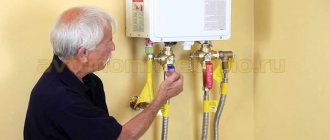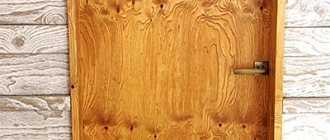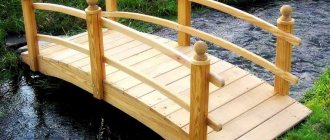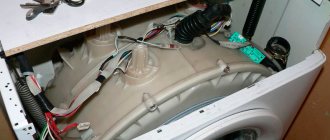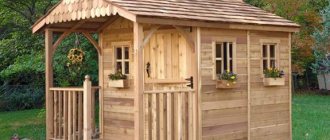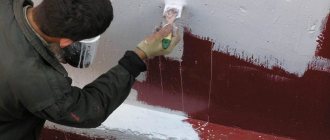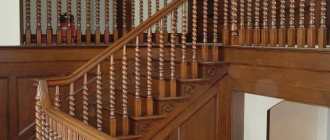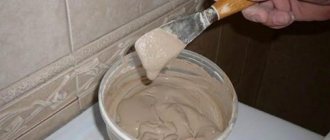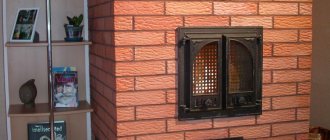Threaded connections are present in all machines, tractors and other mechanisms. They are used when parts must be detachable. This is very convenient and allows you to quickly replace what is broken. But sometimes it happens that the screw cannot be unscrewed, it is impossible to remove a stuck pin, or the head of the bolt has been licked off. How to unscrew a screw with a broken head? How to get a broken pin? How to unscrew a crimp in a hard-to-reach place?
We’ll talk about how to unscrew a broken, broken or licked bolt or screw later in the article.
Why the screw does not come out: the main reasons for souring of bolts and stripping of threads
Every driver or auto mechanic faces the problem of how to unscrew a bolt with a torn head, a hexagon with torn edges, or a broken fitting. When operating cars, tractors and other special equipment, threaded connections often come into contact with oily or caustic liquids, become clogged with dirt and experience increased stress when the loads are exceeded. All this negatively affects the strength of bolts and studs.
It is imperative to unscrew the hexagon with the broken head. If this is not done, you will not be able to install the new part using standard connections. And drilling nearby will reduce the strength of the spare parts and compromise the integrity of the structure.
To prevent the appearance of broken studs and bolts with a torn head, it is important to carefully inspect the condition of the threaded connections during each maintenance and replacement of parts. If defective ones are found (with traces of corrosion, sagging, torn threads or licked hexagon faces), they must be replaced with new ones. This will help maintain the quality and strength of the connections.
But problems can arise even with proper and regular maintenance. The main reasons why it is difficult to unscrew a bolt with a broken head are the following:
- natural metal fatigue that occurs under constant stress during operation;
- contact with technical liquids (diesel fuel, oil, antifreeze, etc.);
- violation of the protective layer of fasteners, resulting in rust or corrosion processes;
- loss of metal strength as a result of constant overheating;
- fasteners that are too tight;
- manufacturing defects.
But whatever the reasons, it is important to know how to unscrew a screw with licked edges, a torn head or rust, as well as how to carefully remove the crook of the bolt. Let us further consider in detail with photos special cases and propose the optimal method for each situation.
How to choose the optimal diameter and size
The main design parameter of any bolt is the thread size. This is the nominal cross-sectional diameter of the rod with which the product will absorb all loads.
The calculation is carried out mainly according to two criteria: analyzing the tensile axial load and transverse shear. What is noteworthy is that in the second case, any fastener performs significantly worse than with axial tension.
When calculating use:
- the exact amount of workload;
- margin of safety;
- the value of the permissible tensile strength of the bolt material;
- the value of the permissible shear resistance of the bolt material;
- number and logic of bolt distribution.
It should be noted that the entire effective load is not always distributed evenly between the fastener group. This only applies to round and square assemblies. In other cases, some bolts will be loaded 15..20% more than others, and this must be taken into account in the calculation.
The required safety margin is taken constructively, focusing on the features of the entire product as a whole and the operation of the unit in particular. In classical mechanical engineering, this parameter cannot be lower than 2.5 - that is, the fastening element in question must withstand 250% of the maximum working load. In modern household products, manufacturers include coefficients from 1.2 to 1.5, relieving themselves of responsibility for mechanism failure if the user overloads it above the permissible limit.
If you follow the recommendations and approach the issue of safety factor thoroughly, then you should first take into account the nature of the loads: with a constant cycle, from 4 to 6.5 are prescribed, and with variable loading - from 6.5 to 12.5. With such a large reserve, engineers ensure unloading of fasteners, increase overall reliability and increase service life.
In order to calculate as accurately as possible all the operating conditions of the connection, you will also have to expand the calculation to use the parameters of the assembly itself:
- thickness of tightened parts;
- elastic modulus of parts materials;
- the diameter of the holes in which the bolts are installed;
- the area of contact of the head and nut with the ends of the parts.
If the unit is constantly or periodically exposed to heating or cooling (above +100C° and below −50C°), the influence of temperatures on both the bolt material and the materials of the parts is additionally taken into account, since their physical, mechanical and strength characteristics will change. This is especially significant in conditions above +300°C, when heating can weaken the bolt by 25% of its original strength.
The calculation for axial and shear loads is different:
- for tension - the diameter of the bolt is calculated based on the permissible tensile strength;
- for shear - the diameter of the bolt is calculated using 20..30% of the yield strength as the permissible shear resistance.
In some cases, crushing is also calculated as a clarifying parameter.
Please note: the calculations use permissible resistance values for each type of load. These parameters must be selected from reference literature or by dividing the yield strength of the material by the accepted safety margin.
So for a product made of “raw” steel 20, its own yield strength will be 250 MPa. The permissible tensile stress, selected from the reference book, is 95...140 MPa, shear stress - 45...85 MPa, crushing - 175...210 MPa. The exact value will depend on the type of load according to the three hazard classes. To find the required quantities for any materials and conditions, you can use volume 1 of the “Handbook of Mechanical Designers” by V.I. Anuriev.
The result of the calculation will be the minimum permissible cross-sectional diameter with which the bolt will withstand a given load without destruction and plastic deformation. This size can be compared to the internal diameter of the thread. So, if according to calculation you get a value of 11.2 mm, you should focus on the M14 thread - since the internal diameter for this standard size is 11.546 mm. The selected bolt must always be clearly larger than the calculated value.
The above scheme is suitable for evaluating the performance of one product. If a group is considered, then the total effective load is divided by the total number of fasteners.
The last formula takes into account that the distance (arm) from the acting force to the fastening element has a direct effect on the distribution of the load.
In practice, only an even number of bolts in a group is used to facilitate marking and subsequent processing of parts. The most common numbers are: 8, 12, 16, 24. In rare cases, if large-sized products are assembled, 36 bolts are installed.
Based on the calculation results, you should buy bolts along the nearest larger thread or even through one thread. The length is determined constructively - with the expectation that exactly how it will be installed in the assembly: through it, secured with a nut, or point-blank into a blind hole. Remember that when assembling with a nut, the threaded end must protrude from the nut by at least 2 mm, and for large threads - up to 5 mm.
A universal algorithm for unscrewing a broken pin
| If the threaded part sticks out | Screw on two nuts. Unscrew the stud by grasping the bottom nut with a wrench. |
| Screw on one nut and weld it to the stud. Remove the fastener by grasping the nut with a wrench. | |
| If the smooth part sticks out or the thread is broken | Fit the nut and weld it to the protruding part of the stud. When the metal has cooled, unscrew it using a wrench. |
| If the pin breaks off with a protrusion, place a thick screwdriver at its base and hit it with a hammer in the direction of unscrewing. | |
| Use a chisel to knock out a groove at the end of the broken stud and unscrew the fastener with a flat-head screwdriver. | |
| Use a pin driver. | |
| If the head of the bolt is torn off or the stud breaks off flush | Use a chisel to knock out a groove at the end of the broken stud and unscrew the fastener with a flat-head screwdriver. |
| Semi-automatically weld the protrusion and then weld a nut or rod to it, which will make it easy to unscrew the stud. | |
| Drill out the crease. Drill along the entire length, gradually increasing the diameter of the drill. The remnants of the thread are removed with needle-nose pliers, having first been sprayed with a wedash. | |
| Use an extractor or TORX. |
How to remove rust: 9 ways
Rust always causes distress when it appears. You can find it anywhere - on any metal, on tiles, on clothes, on porcelain, on plumbing fixtures, on dishes, on decorative items and much more. On the household chemicals market you can find various products that help fight such difficult-to-remove stains, but you can also use what you have on hand. On the website Eliminate.ru you can find non-hazardous, environmentally friendly and fairly simple home remedies to help remove rust .
How to remove rust - home remedies
I would like to emphasize that when using any of these products, you should not increase the exposure time on the stain. This may result in damage to the product. And after treatment, it is important to rinse and wipe dry the exposed surface - this will prevent rust from reappearing.
A universal algorithm for unscrewing a bolt with a damaged head
The mechanics of how to unscrew a bolt if the head is broken will be similar to the situation with unscrewing a stud. You can unscrew a bolt without a head using one of the methods described above.
Tips on how to unscrew a bolt if the head has been licked are briefly given in the table.
| If the edges of the bolt are licked (not too much) | Use a file to sharpen the edges and unscrew the bolt with a wrench. |
| Place a 6- or 12-point socket under the socket wrench and unscrew the bolt with the wrench. | |
| Weld a nut whose inner diameter corresponds to the outer diameter of the bolt head. Unscrew using a wrench. | |
| Use a chisel to make a groove along the diameter of the bolt head, and unscrew it with a screwdriver. | |
| If the bolt head is torn off or severely damaged | Cut off the head with a grinder, unscrew the rest of the fasteners using one of the methods for studs. |
| If a bolt with a broken head has a protrusion, place a thick screwdriver at its base and hit it with a hammer in the direction of unscrewing. | |
| Use an extractor or a suitable sprocket. |
Don't forget about prevention
Methods for removing rusty parts - otherwise, no matter how you say it, you need to report hard and spend an hour. To avoid this, it is better to take preventive visits.
- The nuts that secure the muffler in the car or wheels are coated with anti-corrosion agents and then with grease.
- If you skimp on saw parts, sand and other obstructions speed up the oxidation process and increase the risk of fermentation, which then more often affects not only the parts of the vehicle, but also the entire car.
- Vikorist only clear fastenings with a high class of value. Saving on bolts and nuts can lead to their immediate failure and damage to adjacent assemblies.
- If possible, save transport costs in the garage. Parts of the litter are harmful not only on the body, but also on the fastenings.
- Keep an eye on the plumbing. If the faucet in the kitchen or bathroom is leaking, there will soon be a problem. Why do you have to remove the mixer and change the gaskets? In this manner, you are not only protecting against premature failure, but also fastening elements from the creation of damage.
- Lock up reliable tools. It’s not cheap to build, but in the process of operation, show yourself only the positive side.
As you know about threaded pipes, check them regularly to ensure there are no molasses on them. If necessary, promptly replace gaskets and other parts to ensure tight connections.
How to remove a stud from an engine block
Scheduled replacement of cylinder head studs
It is recommended to replace the cylinder head studs at the same time. By installing fasteners from the same batch, we ensure that all studs have similar characteristics. Accordingly, the load will be distributed evenly, and this will increase the service life of the unit.
Before unscrewing the stud from the engine block, thoroughly moisten the joints with WD-40. If you don't have it on hand, kerosene or brake fluid will do. You need to unscrew the bolts with a special wrench, but if you don’t have one, you can unscrew the stud from the aluminum block with a gas wrench.
Important: you should not sharply pull or yank the key - this is a sure step towards the appearance of a breakage.
If you fail to unscrew the stud from the aluminum engine block the first time, you need to re-apply technical fluid to the connections - it’s better to find WD-40. After 10-15 minutes you can try again.
To make removing the cylinder head studs easier next time, lubricate each one with graphite lubricant before installation. When tightening, use a torque wrench and ensure that the torque does not exceed the recommended values.
If you follow these recommendations, unscrewing the stud from the cylinder head next time will not be difficult. But what to do if last time you were not so prudent or others did the repairs?
How to remove a broken bolt from an engine block
It is often not possible to avoid broken studs from the engine block even with careful attempts to remove the fasteners - metal fatigue and manufacturing defects have not been canceled. The situation is unpleasant, but there are ways to fix everything and still unscrew the broken bolt from the engine block. Let's look at the simplest and most effective methods.
If a fragment of a pin remains sticking out
To unscrew a broken pin from the engine block, proceed as follows:
- Place a nut on the stud piece (a slightly larger diameter is needed) and weld it to form a bolt. After this, you can easily unscrew the aluminum stud with a regular spanner.
- A piece of reinforcement is welded to a broken bolt in the aluminum engine block. The longer it is, the larger the shoulder will be, which means it will be easier to unscrew the pin. It is optimal to take a 35 cm piece of reinforcement. Next, unscrew the structure like a regular screw.
- If the broken bolt from the block head is of sufficient height, it can be sharpened with a file to make it square. After this, unscrew the bolt using a tap wrench.
If the cylinder head stud breaks flush
To unscrew a bolt from the engine block that has broken flush with the surface, you will have to drill it out.
- Wrap the cylinder block with thick cloth to prevent soot and fumes from getting inside.
- Sand the crease with a grinder with an abrasive attachment to remove chips and protrusions.
- Make a small hole in the center of the cylinder pin.
- Drill out the stud to its full depth using a smaller drill bit. It is very important that the drill does not deviate from the vertical and does not go to the side. To do this, the cylinder head block must be placed or fixed.
- Restore the thread for the cylinder head stud using standard taps of the appropriate diameter.
If it was not possible to unscrew the broken aluminum cylinder head bolt, you will have to install a new stud of a larger diameter. To do this, a hole is drilled in the place of the crease for a new pin. After drilling, you need to cut the thread, this is done using a tap of a suitable size. A cylinder head stud with a diameter larger than the standard one is screwed into the prepared hole. Accordingly, it will require a new nut.
Tools for removing rusted nuts and bolts
Using force is not the best method in dealing with “stuck” fasteners. Most often, you can cope in simpler ways - with the help of special means.
Here are the most popular options:
- WD-40 is a classic lubricant for car owners for all occasions.
- Flammable liquids - kerosene, turpentine, diesel fuel or gasoline. It is not always possible to unscrew a rusted bolt or nut using such compounds, but you should try.
- Acid. If you have a weak acid on hand, use it. The point is that the working fluid dissolves metal oxides.
- Coca Cola. If nothing is found from the above list, you can use the drink Coca-Cola, beloved by many. Its peculiarity is the presence of orthophosphoric acid in its composition, which effectively copes with oxidative processes.
How to remove a stud from an exhaust manifold
The exhaust manifold causes the most problems with soured and broken studs. The fasteners here are exposed to temperature changes, soot, fumes and dirt get into the joints - and these are the right conditions for the appearance of stuck nuts and brittle bolts.
If the stud and nut have become sour and cannot be unscrewed
Upon visual inspection, it may seem that the nuts are tightly soured - this is due to the adhesion of dirt and soot. Inside, the thread may be intact and quite amenable to unscrewing.
If you cannot immediately unscrew the pin from the exhaust manifold, proceed as follows:
- Treat the connections with WD-40, wait 10-15 minutes and try to unscrew the nut from the stud again. If it doesn’t work, repeat the steps described. Sometimes you need to handle it with a wedge several times to get the nut to give way. Before repeated treatments, you can carefully clean the joints with a brush with metal bristles.
- If you cannot release the exhaust manifold stud, you can heat the nut with a torch. But before unscrewing, you need to let the metal cool completely.
- If the nuts do not budge, they can be cut off with a grinder or split with a chisel.
Usually, after this, unscrewing the studs from the exhaust manifold will not be difficult, since soot and fumes rarely get under the nuts. But if the fasteners have stood for a long time, then the metal may burst due to temperature exposure.
How to remove a broken pin from an exhaust manifold
Use the following tips to quickly remove a broken exhaust manifold stud:
- Grind the crease with a grinder with an abrasive disc to remove any unevenness. Use a chisel to hammer into the deep groove and unscrew the broken pin from the exhaust manifold using a flat-head screwdriver.
- Weld a nut onto the broken stud, wait until it cools completely and then unscrew it using a wrench. The method is suitable even when the fastening has broken off flush, since welding will not take hold of the aluminum base.
- If all else fails, you can remove the broken stud from the exhaust manifold with good old fashioned drilling. Using a file or a grinder, cut off the unevenness from the crease so that you get a more or less flat area. Mark the hole exactly in the center and drill to the full depth, first with a thin drill (you can take a two-piece), and then with a thicker one (3.5). Treat the remains of the broken pin with WD-40 and unscrew it, helping yourself with pliers or needle-nose pliers. To restore the thread, you need to go through the appropriate tap.
How to remove a bolt if it is broken and nothing helps or the thread is already badly damaged
In such a difficult situation, you should drill a hole so that its width is sufficient for cutting new turns. Although the hardware may be hardened and difficult to give in. Then it must be subjected to heat - heated red-hot - and then left to cool. It is strictly forbidden to forcibly cool it with water - too sharp a temperature rise will only lead to the appearance of cracks.
The operation of slowly changing the temperature regime must be carried out several times. Due to this, the metal will be tempered and slightly softened, and the damaged element will become easier to drill out. But if the body of the part (unit, functional unit) is made of aluminum, special care should be taken to ensure that the surface in the heating zone does not warp.
How to unscrew a stud or bolt on a wheel
Car owners and tractor drivers get into a lot of trouble when they need to unscrew a pin or bolt from a wheel hub. There are several mechanics for fastening wheels, and they all require strict adherence to manufacturers' recommendations (withstand a certain force, center the disk, use spacer rings, etc.). Otherwise, the load is unevenly distributed across the wheel mounts with all the ensuing consequences.
There are no particular differences in how to unscrew a wheel stud or bolt. The only thing is that before unscrewing the studs you must first remove the nuts. If they become stuck, it is enough to treat them 1-2 times with WD-40. There are usually no particular difficulties with them: although they look “scary”, in the sense that they are covered with dirt, they unscrew without problems. But then the fun begins.
Studs and bolts very often crack and break off. To unscrew a broken stud from a hub on a passenger car, proceed as follows:
- Remove the wheel and brake discs.
- If the broken bolt from the wheel hub is too long and, when knocked out, will rest against the steering knuckle, you can file it or grind off the interfering edge with a file.
- After all the preparations, the licked wheel bolt is knocked out with a hammer.
If a wheel stud is damaged, it must be replaced immediately, since a bent mount cannot support the designed loads. It is also advisable, when replacing, to immediately unscrew all the studs from the hub and replace them with new ones - hardware from the same batch will distribute the load as evenly as possible.
To unscrew a broken stud or bolt from a wheel hub on a tractor, truck, or in particularly severe cases on a passenger car, you can use one of the following methods:
- Unscrew the wheel bolt or stud using a meat grinder. This is a special gear wrench that serves to increase torque. Even the tightest fasteners, from which ordinary keys bend, can be easily unscrewed with a meat grinder. It can be used to install heads for nuts and bolts of different sizes.
- If there are no special tools, then in order to unscrew a bolt or stud from the wheel hub, you must first loosen the fasteners. To do this, you need to treat the connection with WD-40. If the Vedashka does not help, you can treat the sour areas several times with vinegar essence or a rust converter.
- In some cases, the fasteners must be additionally heated. A torch or blowtorch is suitable for this. Hot metal is cooled by cold water. After this you can start twisting.
- To increase the leverage and make it easier to unscrew a stud or bolt from the wheel hub, insert a crowbar into the key and use it as a handle.
What is a nut and bolt?
Let's start with the theory and remember what a nut and bolt are, as well as what functions they perform:
- A bolt is a rod made of metal and having a square or hexagonal head, as well as a thread intended for screwing on a nut. Today there are many types of bolts, the design and shape of which depends on the purpose. Here it is worth highlighting anchor, hinged or eye bolts, bolts with a countersunk or semicircular head.
- A nut is a fastening element that has a hole with a thread cut inside. As a rule, nuts are hexagonal in shape and can be unscrewed with a wrench. But there are other versions of products - round with a notch, with a protrusion and others.
How to unscrew a bolt in a hard-to-reach place
To unscrew a bolt in a hard-to-reach place, you can use a mini-driver. This is a compact induction device that can be used to heat nuts, studs and bolts. Thanks to the long and thin nozzles, you can use a mini-ductor to get into the most inaccessible places to loosen soured fasteners and unscrew the bolt more easily.
The following technique can be used to remove a broken bolt or stud from a hard to reach area. If the fastener does not break off flush and the crease protrudes by at least 2-3 mm, then you need to screw a suitable nut onto it and weld it. Once the metal has cooled, using a wrench or a socket with a wrench, you can unscrew the broken bolt.
If the crease of a bolt in a hard-to-reach place breaks off flush with the surface, then first it must be extended. To do this, a “slide” is welded using a semi-automatic welding machine. If you can’t clamp this build-up with pliers and unscrew it, then you can, as in the previous case, weld a nut onto the protrusion and then unscrew the broken bolt using a spanner.
If the methods described above fail to unscrew the crook in a hard-to-reach place, the part will have to be removed and then drilled out the broken bolt.
Why shear bolts fail and how to repair them
The main reason for shear bolt failure is the operator himself. He inattentively studies the surface being removed, does not know it well, or simply ignores the basic rules for operating a snow blower.
There is always a possibility that some metal object remains under the snow, hard ice has formed, there are stones, remains of bricks, and so on. When hitting such objects, the shear bolts immediately act as a fuse. To continue using the snow blower, you will first have to replace the old consumables. This is due to the fact that without a complete shear bolt, the rotation process of the auger mechanism is blocked. This is necessary in order to prevent the development of more serious damage and problems with the equipment.
To prevent such situations from occurring, or at least to minimize the number of shear bolt trips, before starting work, you should check the surface for the presence of any hard objects under the snow. Moreover, such a recommendation must be written in all operating instructions for absolutely every snow removal unit. Therefore, it will not be superfluous to study the instructions in detail and only then start working.
It is a mistake and naive to believe that shear bolts that have worked during a collision with an obstacle can be restored. No, they cannot be repaired. The only option in such a situation is to replace the consumable with a new element.
One more thing. For each shear bolt, the owner of the snow blower will have to pay at least 100 rubles. If you ignore the rules of operation and handling of snow removal equipment, replacing shear bolts can be a frequent procedure. And this will cause a significant blow to the budget.
How to unscrew a rusty screw or stuck hairpin
How to unscrew a screw if it is rusty? This task may not be as simple as it might seem at first glance. Especially when it comes to threaded connections that have not been touched for decades. And if the car or tractor has been outside all this time, problems with rust cannot be avoided.
To unscrew a rusty or stuck stud, proceed as follows:
- Treat the joint with WD-40 every 10-15 minutes, working the screw with a wire brush before each application.
- In case of strong sticking, you can use a rust converter or vinegar essence.
- If the stuck pin still does not give in, the connection is heated. To do this, use a blowtorch, gas torch or mini-inducer. In a hot state, it is better not to unscrew a rusty screw, but first cool it (you can pour cold water on it). If the pin still does not give in, you can unscrew it hot, but in this case there is a high probability of damage.
Prevention
Judging by the information given above, unscrewing a rusted bolt or nut is not difficult, but it takes a lot of time and effort.
It’s easier to prevent problems and take into account a number of recommendations. Below are just a few of them:
- Coat the nuts that hold the muffler with an anti-corrosion compound before tightening. After this, treat the product with grease (for greater effectiveness, add a little graphite to the composition). This prevents sticking.
- Wash the engine and the car as a whole from time to time. Dust and dirt that accumulate on the surface accelerate the process of corrosion.
- Buy only high-quality fasteners made of durable metal. When choosing, pay attention to such a criterion as strength class. Try not to skimp on nuts and bolts, because using cheap products leads to a number of problems in the future. At the same time, the question of how to unscrew a rusty fastener can become very relevant. Remember that we are talking about reliability and durability, savings on which are inappropriate.
- Do not abandon your car in a nearby or open parking lot. Storing a vehicle in a closed garage is an opportunity to reduce the risk of corrosion on connections. The negative impact of rain or cold negatively affects the condition of the body, as well as the vehicle’s fastenings.
- When performing work, use only high-quality tools - gas or ring wrenches, as well as special heads. Of course, this will require more money to purchase, but it is more convenient to use such a tool, and the mounts themselves last longer. A good tool allows you to solve two problems - maintain the integrity of the nut and protect it from damage, and also stretch the fastener with the required torque.
How to unscrew a broken hex bolt
Hex sockets are often used to fasten automotive and tractor parts. And, of course, they can also sour and break off. But most often problems are caused by a licked hexagon with knocked down edges - it is impossible to unscrew it using standard keys. Let's figure out what to do in this situation.
How to unscrew a licked hex bolt with knocked down outer edges
If the hexagon is licked from the outside, you can unscrew it in the following ways:
- Use a file to re-file the edges, reducing the size of the bolt head, and then use a standard spanner with a suitable head.
- Place the head of a 12-point spanner onto the licked hexagon. The diameter of the nozzle must be equal to the outer diameter of the hex bolt. After hammering the head, use a spanner to unscrew the hexagon. After this, remove the head and knock out the broken hexagon from the reverse side with a hammer.
- Another way to unscrew a hex screw with stripped outer edges is to use asterisks (torx). But you can hammer in the sprocket only if the bolt has not “boiled”, otherwise you can easily break it off and get even more problems.
How to unscrew an internal hexagon with licked edges
The easiest way to unscrew an internal hex bolt is to use TORX sprockets. You need to take a torx with a diameter slightly larger than the dimensions of the internal hexagon. Taking into account the licked edges, they will fit each other just right.
To unscrew a screw with torn edges, hammer the sprocket to the limit with a hammer. After that, just unscrew it with a key. The method is only suitable for hexagons made of relatively soft metal - the sprocket will simply break on high-strength hardened steel, and then you will have to drill out tool steel.
It is much easier and safer to use a 12-point socket from a spanner wrench that is the size of the outer diameter of the hexagon. It needs to be pressed onto the hexagon socket bolt and then unscrewed using a spanner.
If you don’t have TORX sprockets at hand, but you need to unscrew an internal hexagon with licked edges that goes flush with the surface of the part, you can use welding. A semi-automatic machine welds a “hill” onto the bolt head, to which a nut or rod is then welded. If you have welded a nut, you can unscrew the bolt with a licked internal hexagon with a wrench; if it is a rod, then unscrew it using force.
A slightly more labor-intensive, but still workable way to unscrew the bolt under the internal licked hexagon, if it protrudes above the surface, is to cut off the head to make a stud. If it has not soured, it can be easily removed with an extractor. If it becomes sour, treat it with WD-40 and, as a last resort, drill it out.
How to unscrew a hexagon without a key
Well, to top it off, a little trick on how to unscrew a hex bolt without a hex key. To do this, you will need a thick long pin and two nuts that fit it. The nuts need to be screwed onto the stud at a distance from each other and the hex head should be fixed between them. By tightening the nuts to the hex head, you can unscrew it without a key.
Another trick on how to unscrew a hexagon without a hexagon is as follows. Use a chisel to make a deep cut in the head of the bolt. Next, hit the chisel with a hammer in the direction of unscrewing the hexagon. It should move, and then you can try to unscrew it by hand.
What is strictly forbidden to do (use of force)?
The main mistake of many beginners is a thoughtless approach to twisting and the use of “force” methods.
Remember, in order to unscrew a stuck element, it is important to be patient and not rush. Solving the problem requires a consistent and measured approach.
Haste in resolving an issue can cause many problems.
Thus, car owners often rush to unscrew a rusty bolt and tear off its upper part.
The result is drilling out the broken product, which will take a lot more time.
In addition, the result of haste may be damage to nearby nodes with the key, which will lead to the need for additional investments.
Before starting work, draw up an action plan, and then begin to implement it.
If you work in a hurry, the total cost of time and money may be higher. Moreover, there are enough methods to quickly unscrew a rusted nut or bolt. We will talk about them below.
Rust solvents for metal products
Treatment with rust solvents allows the tool to return to its original appearance.
Various types of chemicals are used to clean iron objects. Rust solvents are made from acid, zinc oxide or plant components. To get your tools in order, you can try Syntilor Ruggine, Sonax, Liqui, Wurth, etc.
Such products are harmful to the skin, so work should be carried out with protective gloves.
When using chemical compounds, you should adhere to safety precautions:
- Strictly follow the manufacturer's instructions for using the substance.
- Wait the right time for the product to react with the corrosion, and then clean the product.
- Make sure that the drug does not come into contact with the skin and mucous membranes.
- Use solvents only for small items.
Products based on tannins and additives are considered safe, since they do not contain toxic compounds.
Chemical zinc solvents are widely used in the automotive industry. They are also used to prevent corrosion.
How and with what to properly clean metal tools
Tools damaged by rust cannot be used.
For large objects, a mechanical method is used, for example, sandpaper, a wire brush, a scraper or sandblasting.
This processing method is not suitable for small parts. In these cases, it is recommended to use store-bought cleaning products and folk recipes. Special compounds allow you to remove plaque without damaging the surface.
Before you clean rust on metal, you should prepare your tools for processing. If they are severely damaged by corrosion, you will need a steel wool brush for the procedure. For deep damage over a large area, it is recommended to use an electric grinder.
Metal cleaning devices require the use of physical force. In this case, care must be taken not to damage the surface structure. At the end of the work, you need to sand the tools with sandpaper to remove any traces of scratches.
